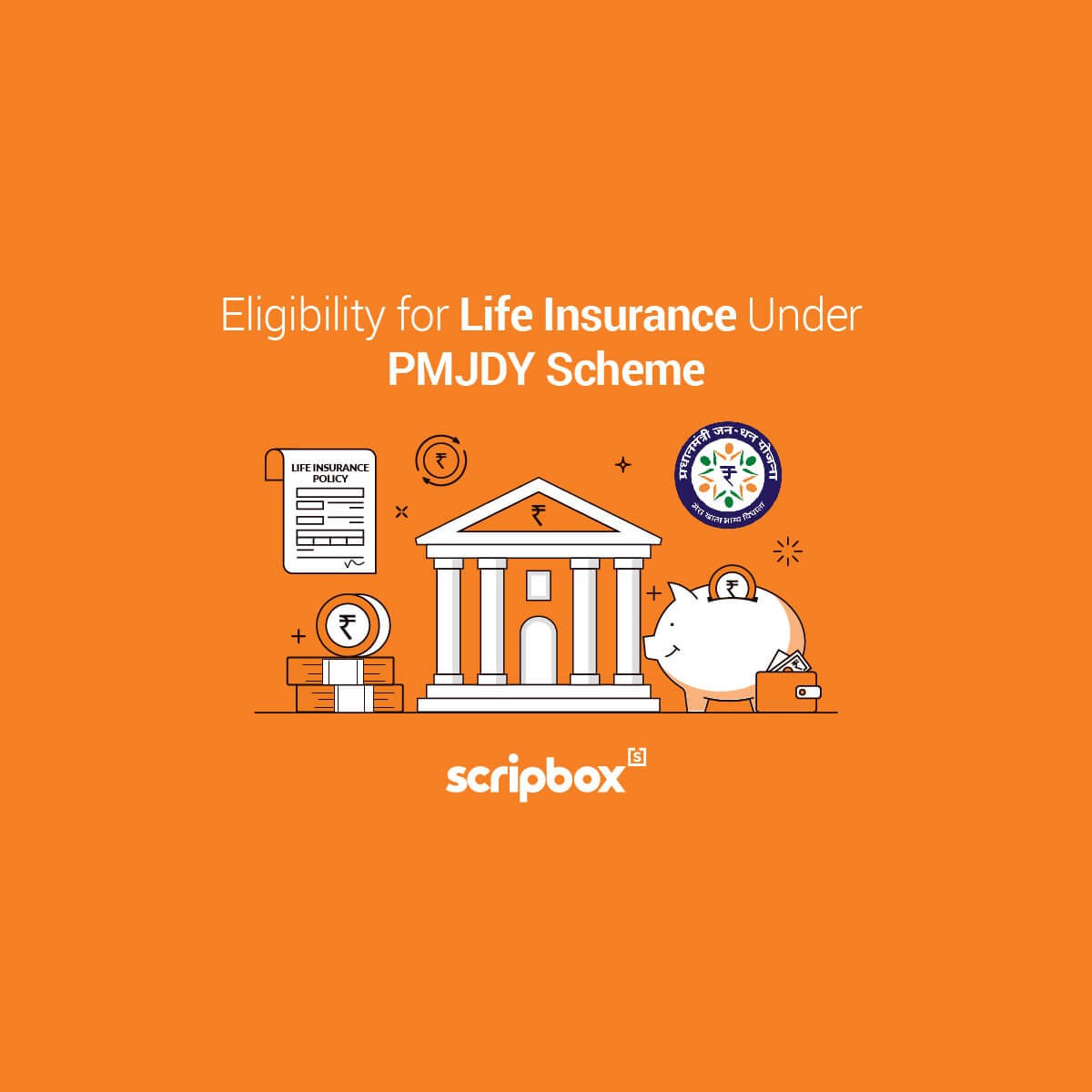With poverty and unemployment still at alarming levels in India, the government of India, in collaboration with the Ministry of Rural Development, launched the Deen Dayal Upadhyaya Antyodaya Yojana in an attempt to make Indian citizens self-sufficient by providing them with skill development courses and classes. The government hopes that by doing so, citizens from underdeveloped areas of the country and those living in poverty will develop a spirit of entrepreneurship. The Ministry of Rural Development strives to provide housing for the destitute and provide social security, proper working space, and institutional credit to street vendors. The government has allocated Rs.500 crore to the cause in order to ensure that the initiative is given a boost.
What is Deen Dayal Upadhyaya Antyodaya Yojana (DAY)?
The Deen Dayal Upadhyaya Antyodaya Yojana (DAY) is a government program that aims to improve the lives of urban and rural impoverished people by developing skills and expanding sustainable livelihood options. One of the goals of ‘Make in India’ is skill development, which aids the country’s socio economic development. This program helps to achieve the ‘Make in India’ goal. Deen Dayal Antyodaya Yojana was launched under the Ministry of Housing and Urban Poverty Alleviation (HUPA). The Government of India has provisioned Rs.500 crore for the scheme.
The Deen Dayal Upadhyaya Antyodaya Yojana comprises of the following two components:
- National Urban Livelihoods Mission (NULM)
- National Rural Livelihoods Mission (NRLM)
Aim of National Urban Livelihoods Mission (NULM)
Reduce urban poor households’ poverty and vulnerability by enabling them to access gainful self-employment and skilled wage employment opportunities, resulting in a significant improvement in their livelihoods on a long-term basis, by building strong grassroots level poor institutions and eventually linking them to India’s entrepreneurial and startup revolution. The Deen Dayal Upadhyaya Antyodaya Yojana NULM’s goal would be to provide housing and vital services to the city’s homeless in stages. In addition, the Mission would address urban street vendors’ livelihood concerns by promoting access to proper venues, institutional financing, social security, and skills for them to access developing market opportunities.
Guiding Principle of National Urban Livelihoods Mission (NULM)
- The National Urban Livelihoods Mission (NULM) is based on the notion that the poor are entrepreneurial and have an innate desire to escape poverty. The task is to unlock their potential in order to create meaningful and long-term livelihoods.
- Any livelihood development initiative, according to NULM, can only be scaled up in a time-bound manner if it is driven by the poor and their institutions. The impoverished can establish their own human, social, financial, and other assets with the help of strong institutional systems. As a result, they have more access to public and private sector rights, entitlements, opportunities, and services, as well as increased solidarity, voice, and negotiating strength.
- NULM would strive to provide skill development and finance to the urban poor on a universal basis. It will work to prepare the urban poor for market-based jobs and self-employment while also making credit more accessible.
- Street sellers make up a significant portion of the metropolitan population. Vending on the street provides a source of self-employment and hence serves as a measure of urban poverty alleviation without the need for large government participation. They play an important role in the urban supply chain and are an important part of the urban economic growth process. NULM would like to help urban street sellers have access to adequate venues, institutional credit, social security, and skills in order to take advantage of developing market opportunities. As a result, NULM would attempt to provide urban homeless people with shelter and vital services in a progressive manner.
- Convergence with schemes/programs of relevant line Ministries/Departments and state government programs dealing with skills, livelihoods, entrepreneurship development, health, education, social assistance, and other issues would be a priority for NULM. An alliance strategy with all pertinent ministries will be pursued to promote skills training for rural-urban migrants as a means of bridging the gap between the rural and urban poor livelihoods.
- NULM would like to work in conjunction with the private sector and civic society to provide shelter, skill training, and technical, marketing, and other support to urban poor entrepreneurs who want to start their own small companies or manufacturing units.
Features of National Urban Livelihoods Mission DAY-NULM
The following are the features of National Urban Livelihoods Mission under the Deen Dayal Upadhyaya Antyodaya Yojana
Social Mobilisation and Institution Development
DAY-NULM envisions urban poor people organizing themselves into Self-Help Groups (SHGs) and associated federations. These organizations help the disadvantaged satisfy their financial and social requirements by acting as a support system. The mobilization of vulnerable parts of the urban population, such as SCs, STs, minorities, persons with disabilities, beggars, domestic workers, rag pickers, and others, is a priority for DAY-NULM. A maximum of Rs.10,000 can be spent on forming a SHG, training all members, establishing a bank account, and other relevant operations.
Capacity Building and Training
To implement DAY-NULM, capacity building and training provide timely and high-quality technical assistance at the federal, state, and local levels. A National Mission Management Unit (NMMU) will be established at the center. States and cities will be assisted in establishing a State Mission Management Unit (SMMU) and a City Mission Management Unit (CMMU) (CMMU).
The establishment of efficient institutional systems such as HR, financial management, social management, and procurement will be supported by the SMMU and CMMU. SMMU and CMMU will receive money for only five years. The maximum amount that can be spent on training and capacity building at the national, state, and local levels is Rs.7,500 per trainee.
Employment Through Training and Placement
Employment through Skills Training and Placement provides training to the urban poor in accordance with market demand so that they can start their own businesses or find stable salary work. There is no minimum or maximum educational requirement for recipients to be selected under this component. The cost per recipient shall not exceed Rs.15,000 per beneficiary.
For North-Eastern and Special Category States, the cost per recipient cannot exceed Rs.18,000. Accreditation and certification are tied to skill training. Training is best done in a Public-Commercial-Partnership (PPP) model, with reputable institutes such as ITIs, NITs, Polytechnics, engineering colleges, management institutes, and other reputable entities in the government, private, and civil society sectors participating.
Self Employment Programme
The Self-Employment Program aims to help individuals or groups of urban disadvantaged people establish profitable self-employment ventures or micro-enterprises based on their talents, aptitude, training, and local conditions. Under this scheme, the unemployed and underemployed urban poor will be encouraged to start small businesses in the service, manufacturing, and petty trades, all of which have high local demand.
For the purpose of selecting recipients, there are no minimum or maximum educational requirements. Individual firms are limited to a project cost of Rs.2 lakh, while group enterprises are limited to a project cost of Rs.10 lakh. On a bank loan to start an individual or group firm, an interest subsidy of more than 7% will be offered.
Support To Urban Street Vendors
This component intends to offer street vendors with skills, as well as help micro-enterprise development and credit access. It also includes provisions for assisting disadvantaged populations like women, SCs/STs, and minorities with social security choices. This component will get up to 5% of the total budget for DAY-NULM. Street vendors will be assisted in gaining access to basic financial services and social security benefits provided by various government programs.
Under the ‘Employment through Skills Training and Placement’ component, underprivileged street vendors in metropolitan areas can also get skill training. They can get help with micro-enterprise development under the ‘Self-Employment Programme.’
Shelter For Urban Homeless
The major goal of the Urban Homeless Shelter Scheme is to provide shelter and other required services to the lowest of the poor in urban settings. The shelters are long-term residences for the city’s homeless. Permanent community shelters for a minimum of one hundred people would be built for every one lakh urban residents. Each shelter might accommodate 50 to 100 people, depending on the local conditions.
The shelters will provide basic communal facilities and amenities such as water, power, a kitchen, sanitation, and so forth. The Indian government would contribute up to 60% of the cost of the shelters’ construction, with the remaining 40% coming from the state. The financial ration between the center and the states in the North-Eastern states will be 90:10. In the case of UTs, the Indian government will cover 100 percent of the costs.
Implementation of NULM Under Deen Dayal Upadhyaya Antyodaya Yojana
Under DAY-NULM, states and UTs are required to submit Monthly Progress Reports or Quarterly Progress Reports in prescribed formats detailing their aims and accomplishments. The States or UTs will establish a method to track the progress of DAY-various NULM’s components. Third-party evaluation, social audits, impact evaluation studies, and other monitoring activities will be carried out. For effective implementation, operationalization, and monitoring, the Mission Directorate of the Ministry of Housing and Urban Affairs will release a set of specific operational instructions. Such instruction will elaborate each component and sub-component of Deen Dayal Upadhyaya Antyodaya Yojana NULM.
Components of NULM under Deen Dayal Upadhyaya Antyodaya Yojana
The scheme encourages urban poor to start up manufacturing and servicing small enterprises, and petty businesses, based on local skills, crafts, and demand. The following are the 7 components of NULM under Deen Dayal Upadhyaya Antyodaya Yojana:
- Social Mobilization and Institution Development (SM&ID)
- Employment through Skills Training and Placement (EST&P)
- Capacity Building and Training (CBT)
- Self-Employment Programme (SEP)
- Scheme of Shelter for Urban Homeless (SUH)
- Support to Urban Street Vendors (SUSV)
- Innovative and Special project (ISP)
What is the National Rural Livelihood Mission (NRLM)?
In 2010, the Ministry of Rural Development devised a mission-style plan called the National Rural Livelihood Mission (NRLM) to address the problem of rural poverty. With effect from March 29, 2016, NRLM was renamed DAY-NRLM (Deendayal Antyodaya Yojana – National Rural Livelihood Mission). It is a federally funded program that is co-financed by the federal and state governments. State Rural Livelihood Missions are in charge of putting the Mission into action (Special Purpose Vehicles).
A District Mission Management Unit (DMMU) is in charge of planning and implementation at the district level, while the district administration retains overall responsibility. The Mission operations are carried out by a Block Mission Management Unit at the block level.
The Mission is implemented in a progressive yet intensive manner, with each year consisting of a set number of blocks. By 2023-24, the Mission is expected to have mobilized all rural poor households. The Department of Rural Development, under the Ministry of Rural Development of the Government of India (GoI), is in charge of policy formation, program monitoring and evaluation, and budget release.
Objective of the National Rural Livelihood Mission (NRLM)
Reduce poverty through
- enabling poor households to gainful self-employment and skilled wage employment options,
- resulting in significant improvements in their livelihoods over time,
- by strengthening and sustaining the poor’s grassroots institutions.
The Mission’s goal is to help the disadvantaged develop sustainable livelihoods so that they can escape poverty. The poor’s institutions are designed to make
- formal credit more accessible
- support for livelihood diversification and strengthening; and
- access to entitlements and public services more accessible.
Guiding Principles of National Rural Livelihood Mission (NRLM)
The following are the guiding principles of NRLM under the Deen Dayal Upadhyaya Antyodaya Yojana:
- The poor have a strong desire to escape poverty and intrinsic talents to do so.
- The poor’s intrinsic strengths must be unleashed through social mobilization and the establishment of strong institutions.
- To initiate the process of social mobilization, institution development, and empowerment, an external devoted and sensitive support structure is required.
- They can enjoy a portfolio of sustainable livelihoods through facilitating knowledge diffusion, skill building, access to credit, access to marketing, and other livelihoods services.
Features of National Rural Livelihood Mission (NRLM)
The following are the features of National Rural Livelihoods Mission under the Deen Dayal Upadhyaya Antyodaya Yojana
Universal Social Mobilisation
In this initiative, at least one woman from each identified rural poor home is brought into the Self Help Group (SHG) network in a time-bound way. This initiative places a special emphasis on vulnerable groups such as bonded laborers, manual scavengers, disabled people, and human trafficking victims. This program develops unique techniques to reach out to these communities and assist them in overcoming poverty.
Participatory Identification of Poor (PIP)
At the community level, the DAY-NRLM Target Group is established through an equitable and transparent Participatory Identification of Poor (PIP) technique. The Target Group, which includes all homes designated as poor using PIP techniques, is eligible for all benefits under this program.
The PIP-identified NRLM Target Groups are de-linked from BPL. The states have began the process of implementing PIP. The PIP procedure is repeated in the communities at regular intervals to update the list of impoverished households. The Gram Sabha scrutinizes the households classified as impoverished using the PIP approach, and the Gram Panchayat approves them. The households on the PIP list are eligible for all DAY – NRLM benefits.
Community Investment Fund as resources in perpetuity
DAY – NRLM provides in perpetuity a Revolving Fund and a Community Investment Fund to poor-serving institutions in order to develop their institutional and financial management capabilities and to establish a track record that will allow them to obtain mainstream bank financing.
Financial Inclusion
DAY – NRLM is a financial inclusion organization that works on both the demand and supply sides. On the demand side, it offers catalytic financing to SHGs and their federations while also promoting financial awareness among the poor. On the supply side, it coordinates with the banking industry and encourages the use of ICT-based financial technologies, business correspondents, and community facilitators such as ‘Bank Mitras.’ It also seeks to ensure that the rural poor have universal protection against the loss of life, property, and health.
Livelihood
Through its pillars of “vulnerability reduction,” “livelihoods enhancement,” “employment,” and “enterprises,” DAY-NRLM focuses on boosting and stabilizing current poor livelihoods. The ‘livelihood enhancement’ is accomplished through enhancing and expanding existing livelihood options as well as tapping new opportunities in the farm and non-farm sectors.
‘Employment’ is attained by developing skills for external job markets. DAY – NRLM also supports and promotes ‘Sustainable Livelihoods of the Poor’ collectives, which provide members with access to livelihood skills, knowledge, technology, products, and support from SHGs to individual members or households.
Convergence and Partnerships
DAY – NRLM is aligned with other Ministry of Rural Development programs as well as state government programs that form direct or indirect relationships with poor-serving organizations. It works with Non-Governmental Organizations (NGOs) and other Civil Society Organizations. It also has a positive working connection with poor-serving institutions, particularly at the level of Village Panchayats, for the exchange of mutual advice, support, and resource sharing.
Sensitive Support Structures
DAY – At the national (NMMU), state (SMMU), district (DMMU), and sub-district (BMMU/PFT) levels, NRLM has established dedicated support structures. Governments, Panchayat Raj Institutions, and District Rural Development Agencies are all well-connected through these systems. The poor’s institutions and other social capitals will also assist in the implementation of this initiative. To efficiently execute the DAY – NRLM, the National Rural Livelihoods Promotion Society was established under the Societies Registration Act of 1860.
Implementation of National Rural Livelihood Mission (NRLM)
DAY-NRLM will be implemented over a ten-year period. It has the intention of working in a block. A block will have around 13,500 impoverished households, or 90 percent of the total, dispersed over 100-120 villages divided into four clusters of 30 villages each.
The blocks are implemented in four different ways: Resource Blocks, Intensive Blocks, Partnership Blocks, and Non-Intensive Blocks. The National Resource Organization provides assistance to Resource Blocks. Internal community resource personnel help execute Intensive Blocks. Partnership Blocks are run in collaboration with local community federations and non-governmental organizations. Blocks in the state that are not taken up for implementation in the initial phase are known as non-intensive blocks.
Funding Mechanism Under National Rural Livelihood Mission (NRLM)
NRLM is a centrally sponsored scheme that is split 75:25 between the federal government and the states. This ratio will be 90:10 between the Centre and special category states (Arunachal Pradesh, Assam, Manipur, Meghalaya, Mizoram, Nagaland, Sikkim, Tripura, Jammu & Kashmir, Himachal Pradesh, and Uttarakhand). The money are sent through NRLM to SRLM and then to the states. The SRLM must open a bank account and notify the NRLM of its existence. The SRLM will distribute cash to the districts based on the allocations outlined in the Annual Action Plan. The cash would be released to the states in two payments by the Centre. The following are the condition for disbursement of funds under NRLM for Deen Dayal Upadhyaya Antyodaya Yojana:
- 60% of their available funds, including the initial sum, were used.
- During the preceding year, the state must release its share.
- The opening balance for the same year should not exceed 15% of the allocation. If it exceeds, the central share will be suitably lowered. Audit report and previous year’s utilisation certificate
- The Ministry of Rural Development will establish an IT-based money tracking system to oversee fund tracking.
Support Structure of NRLM
To catalyze social mobilization, build institutions, capacities, and skills, facilitate financial inclusion and access to financial services, support livelihoods, and promote convergence and partnerships with various programs and stakeholders, NRLM has established dedicated sensitive support units at the national, state, district, and sub-district levels. These units would be staffed with highly qualified and dedicated personnel.
- At the national level, the Ministry of Rural Development (MoRD) is responsible for providing technical and professional assistance to states in establishing Mission societies, implementation architecture, and systems, as well as guiding and monitoring their implementation.
- The State Rural Livelihoods Mission (SRLM), established by the state government, will be in charge of implementing all NRLM-related initiatives in the state. SRLM would be incorporated as a society, trust, or firm as an autonomous body under the State Government.
- The SRLM’s DMMU would be in charge of meeting NRLM objectives and carrying out NRLM activities in the district. DMMU, in conjunction with DRDA, would serve as a support and facilitation unit for field structures.
- The Sub-district level Support Structure is either –
- Block Mission Management Unit (BMMU) led by a Block Mission Manager (BMM) and consisting of 3-5 spearhead teams;
- Project Facilitation Team at cluster (sub-block) level
Discover More
- Pradhan Mantri Jan Arogya Yojana (PMJAY)
- Pradhan Mantri Vaya Vandana Yojana (PMVVY)
- Pradhan Mantri Suraksha Bima Yojana
- Saksham Yuva Yojana
- Samarth Scheme
- PMMVY
- Pradhan Mantri Awas Yojana (PMAY)
- PM Kisan Samman Nidhi Yojana
- Pradhan Mantri Kaushal Vikas Yojana (PMKVY)
- Pradhan Mantri Jeevan Jyoti Bima Yojana
- Multiplier Grants Scheme
- Ujala Scheme
- Pradhan Mantri Jan Dhan Yojana (PMJDY)
- Atal Pension Yojana (APY)
- Pradhan Mantri Shram Yogi Mandhan
- DDU-GKY
- Startup India Scheme
- Antyodaya Anna Yojana (AAY)
- Pradhan Mantri Adarsh Gram Yojana
- Aspire Scheme
- Pradhan Mantri Ujjwala Yojana (PMUY)
- Credit Guarantee Scheme For Startups
- Startup India Seed Fund Scheme
- Pradhan Mantri Yuva Yojana (PMYY)
- Pradhan Mantri Kaushal Kendra (PMKK)
- Stand Up India Scheme
- ECLGS Scheme
- Unnat Bharat Abhiyan
- Digital India Scheme
- Sankalp Scheme
- Samagra Shiksha
- Skill India
- Deen Dayal Upadhyaya Antyodaya Yojana (DAY)
- Credit Guarantee Scheme for MSE (CGSMSE)
- What is Deen Dayal Upadhyaya Antyodaya Yojana (DAY)?
- Aim of National Urban Livelihoods Mission (NULM)
- Guiding Principle of National Urban Livelihoods Mission (NULM)
- Features of National Urban Livelihoods Mission DAY-NULM
- Implementation of NULM Under Deen Dayal Upadhyaya Antyodaya Yojana
- Components of NULM under Deen Dayal Upadhyaya Antyodaya Yojana
- What is the National Rural Livelihood Mission (NRLM)?
- Objective of the National Rural Livelihood Mission (NRLM)
- Guiding Principles of National Rural Livelihood Mission (NRLM)
- Features of National Rural Livelihood Mission (NRLM)
- Implementation of National Rural Livelihood Mission (NRLM)
- Funding Mechanism Under National Rural Livelihood Mission (NRLM)
- Support Structure of NRLM




























Show comments